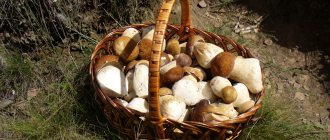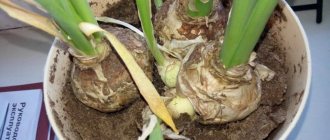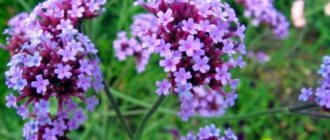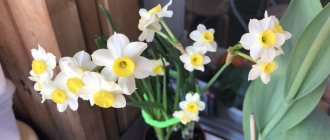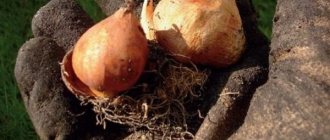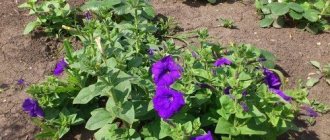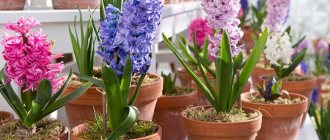Pomegranate means “grainy” in Latin. It has been known in its wild state since the time of Carthage. In cultural gardening, two autonomous species are grown - Common and Socotrans, although there are many wild pomegranates. Traditionally, pomegranate groves are part of the Mediterranean landscape. In our latitudes, growing this exotic tree in a country garden is unrealistic. But if you really want to get pomegranate from a seed, growing it at home will be a good solution. Moreover, this is not at all difficult, and there is a special third type of indoor plant - the Dwarf Pomegranate.
Tree in an indoor pot
How to grow pomegranate from seed at home
Pomegranate is an amazing plant in every way. Let's start with the fact that it blooms for a long time: from the beginning of summer until autumn. Following the blossoming flowers, more and more new ones appear. Those who saw a blooming pomegranate will never forget this amazing sight. Against the background of green foliage, the flowers look fabulously beautiful - bright orange-red in color and unusual bell-shaped - and cover the plant abundantly. It is also surprising that on a pomegranate you can simultaneously observe both flowering and fruit setting.
On a pomegranate you can simultaneously observe flowers and set fruits
In the East, this plant has long been considered the king of fruits. Pomegranate flowers and fruits symbolize longevity, fertility, wealth and abundance. Many Bible scholars believe that the "apple of heaven" was actually a pomegranate. There is also a belief that the shape of the sepals of the fruit gave people the idea of creating a crown. Well, it’s not worth talking about the benefits of fruits. Everyone probably knows how many microelements, vitamins and organic substances are contained in this fruit.
The shape of the sepals resembles a crown, which is probably why pomegranate is called the royal fruit
Another amazing fact is that pomegranate can be easily grown at home from a seed. If in nature the plant grows up to 6 m, then in indoor conditions the tree rarely exceeds the two-meter level. Thanks to this, an indoor pomegranate can decorate any corner of the apartment and bring joy and prosperity to the house. In general, dwarf pomegranate grows best indoors. It is decorative, has a miniature size and easily adapts to living conditions. It produces few fruits, and they are small - about 5 cm in diameter. But they have a pleasant taste and are juicy.
All purchased seeds are hybrid plants that are adapted specifically to indoor conditions. But many amateurs also germinate seeds from purchased fruits. True, it is best to collect material for sowing not from imported pomegranates, but from domestic ones. In Russia, there are few places where this exotic fruit grows, but they do exist - Crimea, Krasnodar Territory, and the North Caucasus.
Indoor pomegranate is a small but very beautiful plant
Plant characteristics
This deciduous subtropical plant rarely reaches a height of two meters in cultivation. In the wild it can grow up to six meters. In indoor cultivation, its height is unlikely to exceed 80-100 cm, but its low growth will not affect the fruiting of the tree.
Pomegranate in summer
By the way. Dwarf pomegranate is popular, along with lemons, oranges, other citrus fruits, home cultivation of pineapple and coffee trees.
The fruit of the plant is a berry, which consists of 6-12 sections, arranged in two rows and filled with more than a thousand seeds. It is from these seeds that pomegranate is grown.
Berry with seeds
By the way. Pomegranates begin to bear fruit in the garden at the age of three, and with careful care they can continue bearing fruit for up to forty years. Dwarf pomegranate is capable of bearing fruit in the second year, but this will last for a maximum of seven years. And there is a high probability that the fruits will not appear at all.
Nevertheless, growing any indoor exotic plant, which is impossible, due to climatic conditions, to have in a garden at a dacha near Moscow, is an exciting activity.
Blooming indoor pomegranate
Prices for indoor pomegranate seeds
indoor pomegranate seeds
Seedling care
When the shoots appear, you need to move the pot to the brightest window. The ideal place is a southern window sill. But don’t rush to remove the package. You need to harden off the seedlings first. Do this gradually, removing the cover for an hour at first, then gradually extending the time.
When shoots appear, the shelter is gradually removed
Water as needed - do not overwater, but do not allow the soil to dry out too much. You can spray, but don't overdo it.
Important. To water and spray pomegranate, use only settled water, the temperature of which is 2–3 °C above room temperature.
is advisable to maintain the temperature in the room where the small pomegranate grows and grows stronger within the range of 18 to 25 ° C. The room must be ventilated periodically, but during this time the pomegranate must be removed from the draft.
Pomegranate seedlings grow very quickly if they are in comfortable conditions
Picking
Picking is carried out after the seedling has 3-4 true leaves . To carry out the procedure, choose only the strongest plants. It will not be possible to grow healthy trees from weak ones. During picking, the central root of the seedling can be lightly pinched. This will allow the plant to grow more absorbent lateral roots, thereby increasing the ability to absorb nutrients and moisture.
During picking, you can lightly pinch the root
Growing seedlings
After 2 weeks, the sprouts usually hatch. The greenhouse cover is removed. The crops are placed on the windowsill of the south window.
Advice! There is no point in waiting more than 2-3 months for seedlings. It is optimal to plant new seeds.
When the sprouts form 2-3 full-fledged leaves, choose the strongest specimens. Seedlings are planted in separate cups. Transplantation is carried out with a lump of soil so as not to damage the root. However, the central rod is pinched. From this, the root system will begin to grow to the sides. Seedlings continue to be grown in cups, watered, and illuminated with phytolamps in the winter evenings.
Will pomegranates bear fruit from the seed?
A pomegranate grown from a seed can be called wild. But with proper care it will bloom and bear fruit. Depending on what seed material is used, the time of entry into the fruiting period will be different. If you plant hybrid seeds, fruiting will occur in 2–3 years . And if you germinate the seeds of a purchased large pomegranate, then you will have to wait a long time for full flowering, and therefore the first harvest, sometimes up to 7 years.
Hybrid pomegranate varieties begin to bear fruit within 2–3 years
Reproduction methods
How to grow pomegranate? We learned that this bush reproduces using seeds. In addition, there is cuttings and grafting.
Pomegranate from cuttings
To do this, you can’t do without indoor or dwarf pomegranate. This year's shoots (up to 10 cm in length) are cut off from the plant. You can also use root shoots. Next, the lower cut of the cuttings should be dipped into an aqueous solution, where a root growth stimulator was previously added (for 6 hours). Then you need to take it out and rinse it under plain water. Plant the finished cuttings in small pots with substrate. Its depth is about 2-3 centimeters. A transparent dome should be formed over them. To do this, you can use a glass jar or a cut plastic bottle. It is important to install the container where there is the most heat and sunlight. After just one to a month and a half, the first roots appear. As soon as the first green shoots of pomegranate appear, they are planted in separate pots.
Reproduction by grafting
To obtain a varietal plant, it is necessary to graft a varietal cutting onto a pomegranate rootstock grown from a seed. For this, only cuttings from fruit-bearing bushes can be used. Today, more than 150 vaccination methods are known and everyone decides which method is suitable for him. Most often, flower growers use simple copulation, copulation with a tongue, in the butt, and also in the side cut.
How to achieve abundant flowering and fruiting of pomegranate
Abundant flowering of pomegranate is the key to its fruiting. It should be noted that pomegranate blooms readily in indoor conditions. And if he is comfortable, then the first flowers may appear on a tree 10 months old. If fruits set, they should be removed immediately and this ruthless procedure should be carried out for 2–3 years. Only after this period, when the tree gets stronger, can you count on a normal harvest. To stimulate flowering, a number of conditions must be observed.
By the way, most pomegranate flowers are sterile. They fall off without forming an ovary.
Lots of light
The pot with the growing tree must be kept on a southern windowsill. It is the abundance of light that affects the flowering and fruiting of pomegranate. But in summer, in order not to cause leaf burn, the plant should be slightly shaded at the time of greatest solar activity. A pomegranate growing in the shade will be weak and sickly.
Abundance of light is the key to good development of pomegranate
Formative pruning
Flowers, and therefore fruits, are formed on the tips of strong shoots of the current year and on 2–3-year-old ones. This means that the plant needs to be shaped. Pruning is carried out immediately after harvesting or before the awakening begins - at the end of February.
If a young pomegranate does not begin to branch after reaching a height of 50 cm, then you need to help it. To do this, just pinch the top. This way you will form a tree-shaped pomegranate. But you can also form a bush form. To do this, the top of the young plant is pinched at a height of 15 cm.
The pomegranate tree needs shaping in order to achieve a beautiful crown shape over time.
Formation rules
When pruning a home pomegranate tree, it is important to follow several basic rules:
- You can leave up to 5 skeletal branches on a homemade pomegranate;
- pruning is carried out above the bud growing outward;
- the crown should not be very thick. All thin shoots and branches older than 4 years must be removed;
- the growth growing from below is removed.
Indoor pomegranate has one peculiarity - the foliage on the branches and shoots may not wake up at the same time. If the pomegranate is almost completely covered with leaves, but there are still bare branches left, do not rush to get rid of them. First, lightly scratch the bark and check whether the branch is alive or not. Once you are sure that the branch is dry, you can safely remove it.
In spring, green leaves on pomegranates appear unevenly.
Garnet lends itself very well to shaping . To make the exotic plant even more decorative, you can braid the young trunks. To do this, during picking, plant the 3 strongest seedlings in one pot. After adapting them, start braiding the braid directly in the new container. Do not tighten the stems too tightly; there is no need to fasten them with wire either - the branches will hold the trunks together. As an alternative to a braid, you can twist the trunks into a spiral.
Pomegranate will make an excellent bonsai . To do this, the tree is grown into one branch, giving it the correct position and direction using wire. Create the height and shape as you wish.
Pomegranate lends itself perfectly to pruning and shaping, which means that in skillful hands the tree will turn out to be a real masterpiece
Pollination
On pomegranates, 2 types of flowers are formed - with a short pistil and with a long one. It is on the latter that the fruits are formed. But for this the flower needs to be pollinated. The procedure is easily performed using a cotton swab . It would be nice to have 2 grenades located side by side on a windowsill or balcony.
Indoor hybrid varieties already have a certain percentage of self-pollinating flowers. This figure ranges from 5 to 20%. But if you artificially pollinate flowers, their number can be increased.
Rest period
Pomegranate is a deciduous plant. And if your handsome man suddenly begins to shed leaves at the end of autumn, don’t worry. This is a natural process by which the exotic hints to you that the time for peace has come. To ensure a successful winter and for your pet to bloom with renewed vigor in the spring, provide the plant with the necessary conditions:
- During the dormant period, pomegranate needs coolness. Ideally, the plant should be placed on a glazed loggia or balcony, where the temperature, even in the coldest winter month, will not drop below 5 °C. Well, the most comfortable temperature in winter is about 7 °C;
- Watering is carried out extremely rarely. If the specified temperature regime is observed, the soil dries out very slowly, and watering is carried out only when the top layer of soil is completely dry. On average, the frequency of moistening is once every 2 weeks (and maybe even less often, because having lost its foliage, pomegranate practically does not evaporate moisture). Watering should be moderate; pomegranate should not be poured during this period;
- spraying is not carried out;
- resting pomegranates are not fed until February.
All of the above points apply only to cool wintering. If you leave the plant in a warm room, it will continue to grow, so you will have to take care of it. But a warm winter will not benefit the pomegranate.
To fully rest, the pomegranate sheds its leaves.
Planting and transplanting
This is an important procedure for pomegranate, especially young ones. During the first 5 years of growth, the young plant is replanted annually. Adult pomegranate - once every 3-4 years.
Choose a new container that is wider, but not very deep, since the root system of homemade pomegranate grows wider than deep. For example, a pomegranate at the age of 5–6 years is transplanted into a 3-liter container. A pot that is too large will negatively affect flowering and fruiting. Many experienced gardeners advise choosing clay containers. The presence of drainage holes in the pot is mandatory, regardless of the material of manufacture!
You don’t have to be tricky with the soil mixture for long. You can safely use purchased universal soil, adding vermiculite or coarse sand to make it loose.
Transshipment process:
- Place a layer of expanded clay in a new pot so that it completely covers the bottom.
- Remove the pomegranate from the old container (if the plant is healthy, try not to destroy the earthen ball), place it in a new one.
Try not to destroy the earthen ball too much, so as not to injure the roots
- Carefully add nutritious soil mixture to the sides.
After replanting, lightly compact the soil
A pomegranate growing in a tub is quite difficult to transplant. Therefore, in order not to torment the tree and yourself, you can replace the top 2–3 cm of soil with fresh, more nutritious soil once a year.
Pomegranate tubs are difficult to replant, so annually replace the top layer of soil with fresh and nutritious soil.
Landing
Pomegranate seeds are on sale today; they can be purchased, packaged in a beautiful bag with a bright, realistic picture, on the Internet or when visiting a store. But it is better to take fresh seeds of another indoor pomegranate for sowing.
Important! Fruits that are sold on the market can have excellent taste. But, unfortunately, they are all hybrids, which means that plants grown from their seeds will not retain their maternal qualities. Most likely, they will not bear fruit at all, although their decorative value will remain high.
The process of planting pomegranates step by step
Removing the seeds is easy. They need to be cleared of pulp and examined carefully. Only hard grains of a light cream color are suitable for sowing; if they are green and soft, they should not be planted.
Step 1
The prepared seeds are left in water for 12 hours, adding a few drops of the Epin biostimulator. It is necessary that there is a little water - it should not cover all the seeds, since they will need oxygen.
Seeds prepared for planting
Step 2
The substrate is being prepared. It becomes loose, soft and fertile. Although the plant is unpretentious to soil structure and composition under normal conditions, it will need additional nutrition in the house. You can buy universal seedling soil in the store, or you can make it up from peat, sand and leaf turf. All ingredients in equal quantities.
Soil for pomegranate
Step 3
The growing container may be small. When the seedling develops and outgrows the pot (this will happen in a year or two), it will need to be transplanted into a larger container. You can read about how to make containers for seedlings yourself in our article.
Landing container size
Step 4
After soaking in the solution, the seeds are well dried and buried in a moistened substrate. Planting depth is about 1.5 cm.
Advice. It is immediately recommended to sow several grains in one pot. After the seedlings appear, it will be clear which of them are strong and have a high growth potential, and which are better to be removed immediately so that they do not consume nutrients from the soil. If all the seedlings are of good quality, they can simply be transplanted into individual pots later.
Planting a pomegranate
Step 5
The crops are thoroughly watered and covered with glass. The pot is placed on the windowsill, where the sun remains for the maximum number of hours.
By the way. If planting was carried out at the very beginning of spring, and there is enough light, the seedlings may hatch in two to three weeks. When sowing at other times, it may take months for the seeds to germinate.
Rostock
Soil prices
soil for plants
Caring for pomegranate indoors
Pomegranate grown at home is unpretentious. But it is necessary to take into account even his most modest needs.
Watering and fertilizing
Pomegranate should be watered infrequently, but generously. The average moisture requirement for an exotic plant is once a week. But if it is very hot, the frequency of watering increases. To determine whether you need to moisten your pomegranate or not, check the top layer of soil. If the soil has dried to a depth of two cm, then the plant needs to be watered. For humidification, use settled water at room temperature.
It is best to drain the moisture that has leaked into the pan so that the roots do not suffer from excessive waterlogging.
To water indoor pomegranates, it is convenient to use a watering can with a long thin spout so that the water gets into the soil and not onto the trunk
In order for the pomegranate to please not only with its decorative appearance, but also with its fruiting, it needs to be fed 1-2 times a month. To do this, use universal liquid fertilizers for indoor plants. But it is still better to purchase certain compounds that will support the pomegranate in different phases of its growth. In the spring, fertilizing should contain more nitrogen so that the plant has the strength to increase green mass. During the flowering period, pomegranate needs phosphorus. During fruit ripening and in preparation for winter - potassium.
If you grow pomegranate solely for its fruits, then mineral fertilizers should be replaced with organic matter. For example, during the period of fruit filling, you can use chicken manure. The watering solution should be weak - 1:25.
Any type of fertilizer should be applied only after watering, so as not to burn the roots.
If you grow pomegranate solely for the sake of eating the fruit, then after the ovary has formed, feed the plant with organic matter.
Humidity
Pomegranate loves moist air, especially during hot periods. Spray with soft water at room temperature. During normal periods, spray 2-3 times a week. In hot weather - more often.
Never spray pomegranate at lunchtime in the summer, especially if it is standing on a south-facing window or on a balcony in direct sunlight. This may cause the leaves to burn. It is best to spray moisture over the plant early in the morning or in the evening.
Pomegranate is not particularly demanding of humidity, but during hot periods it will be grateful for a light shower
Where is the best place to place a pomegranate?
Of course, near the south window, since the plant’s need for lighting is very great. In the summer, owners of balconies and loggias must place a pot of exotic plants in the fresh air. But not in direct sunlight, but in diffuse shade. Well, if you have a private house, then the place for pomegranate is in the garden, where pomegranate will delight you with incredible flowering.
If the windows of your apartment face north, then most likely your pomegranate lacks light and grows poorly. Be sure to illuminate the plant and it will immediately thank you with a mass of green leaves and beautiful flowers.
In summer, it is best to take the pomegranate out onto the balcony
Basic mistakes
Pomegranate is a rather unpretentious plant. Problems with it arise from inexperienced and inattentive owners.
For example, problems are indicated by:
- yellowing of leaves - from too high a temperature or very dry air;
- brown spots on the leaves - from insufficient soil moisture;
- leaf fall in spring and summer - from heat and dryness;
- drying of leaves can be associated both with a lack of moisture in the soil, and, conversely, with overwatering, which led to rotting of the roots;
- Lack of flowering in an adult pomegranate is due to lack of lighting, moisture, improper pruning, and excess nitrogen in the diet.
It should be remembered that a very high temperature is not needed for the appearance of buds; 18 °C is enough. Most flowers are produced on 1-2 year old short shoots.
Pomegranates in city apartments are often grown not for fruiting: the yield is small, but the tree blooms amazingly beautifully. It is not difficult to grow it even from a seed from an eaten fruit, but it is better to buy seeds in a store so that the variety is intended specifically for home keeping.
Diseases and pests of homemade pomegranate
At home, with proper care, pomegranate practically does not get sick. But too much hydration can lead to undesirable consequences.
Root rot
In this case, the plant will look lethargic, as if in need of watering. This is the insidiousness of the disease. A person with insufficient experience in caring for plants will immediately begin to moisten the pomegranate, causing even more harm to the plant. But we need to act differently. Stop watering completely until the soil is thoroughly dry. If immediate action is required, it is best to remove the plant from the pot along with the root ball and wrap it in newspaper, which will instantly absorb excess moisture. If the plant does not recover after drying the soil, it should be replanted in fresh soil.
To finally cope with the disease, you should prepare a solution of Trichodermin - 10 g of powder per 1 liter of water, and spill it on the soil. And the plant itself can be sprayed with Thiram (cook strictly according to the instructions).
During transplantation, you need to remove all damaged parts of the root and sprinkle the wounds with crushed activated carbon
Powdery mildew
A white powdery coating appears on leaves, flowers and fruits. The disease first leads to deformation of the leaves, then the leaf blade dries out and crumbles. The flowers fall off without ever blooming. The shoots begin to lag behind in growth.
If the disease is detected immediately, a soda solution (5 g per 1 liter of water) will help cope with it. For better adhesion to the leaf surface, you can add a little laundry soap to the solution.
An advanced disease will have to be treated with one of the fungicides:
- Topaz;
- Soon;
- HOM.
Powdery mildew is immediately noticeable due to the whitish coating on the leaves.
What to do if it doesn’t take root
The pomegranate tree has a high survival rate. If all planting conditions have been met correctly, the seedling will quickly take root. If the plant withers after planting in open ground, you need to make sure that all requirements are met. Possible reasons:
- an area in heavy shade;
- poor soil composition;
- acidic soil;
- windy place.
If the gardener notices in a timely manner that the plant does not take root after planting, the situation can be corrected. If there is a lack of nutrition, the soil in the tree trunk circle is enriched with nitrogen, which stimulates the growth of root and above-ground mass, as well as phosphorus and potassium, which ensure normal metabolism and accelerate photosynthesis and the transfer of important macro- and microelements to the parts of the plant in need.
For your information!
If the site is incorrectly selected, the situation can only be saved by immediate transplantation.

